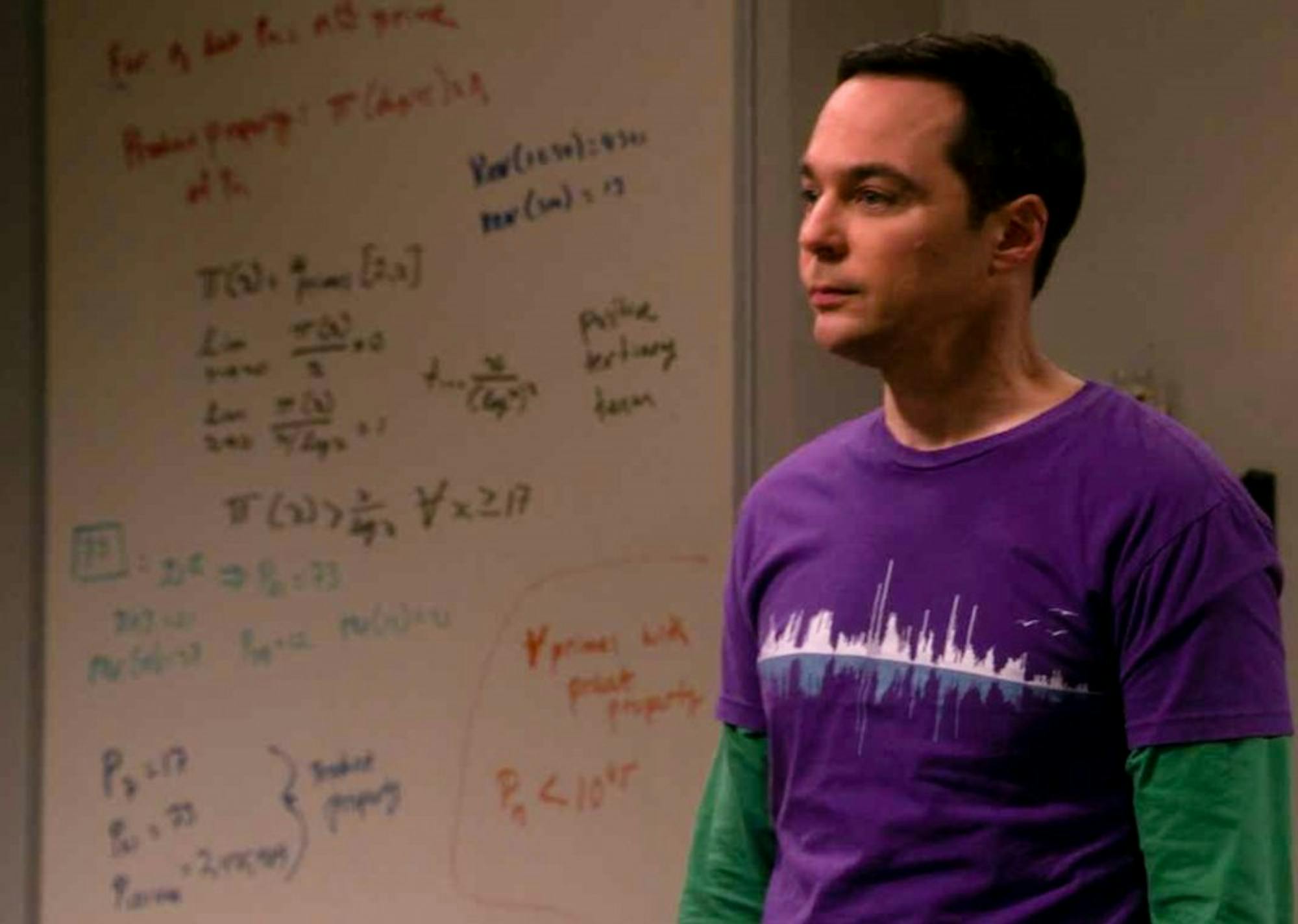A proof co-authored by Dartmouth mathematics professor emeritus Carl Pomerance and Morningside College mathematics professor Chris Spicer appeared on an episode of the television series, “The Big Bang Theory” on April 18. The proof, which was featured on a whiteboard in the background of the show, reveals the uniqueness of the number 73.
Sheldon Cooper, one of the main characters on “The Big Bang Theory,” first expressed his affinity for the number 73 during the show’s 73rd episode, “The Alien Parasite Hypothesis,” which aired in 2010.
“The best number is 73,” Cooper explained in the episode. “Why? 73 is the 21st prime number. Its mirror, 37, is the 12th, and its mirror, 21, is the product of multiplying seven and three ... and in binary, 73 is a palindrome, 1001001, which backwards is 1001001.”
After the episode aired, Spicer, along with two Morningside College students, Jessie Byrnes and Alyssa Turnquist, published a 2015 article in Math Horizons, an undergraduate-focused journal, discussing the potential of creating a proof for Cooper’s claims.
“I really was just watching an episode of ‘The Big Bang Theory’ back in 2014 where Sheldon made his claim,” Spicer said. “I was intrigued, so I asked a couple students of mine to see if they could prove it.”
Pomerance said that he first discovered the Math Horizons article back in 2015 and sent a brief email to Spicer. However, he did not follow-up with Spicer until last summer, when he contacted Spicer about working together to create a proof. Spicer said that after about 130 emails exchanged between the two mathematicians, they had figured out the proof.
Before Pomerance and Spicer wrote the proof, it was possible to use a computer to search and not find other examples of numbers with similar unique qualities to the number 73. However, Spicer said that their proof rules out numbers even beyond the range of computers, and shows that the number 73 is finitely unique.
After Pomerance and Spicer received the news that their paper had been accepted for publication by the journal American Mathematical Monthly, they reached out to CBS, the TV network on which “The Big Bang Theory” airs, looking for permission to use a photo from the show in the upcoming paper.
While searching for the point of contact to receive the necessary copyright approval, Pomerance said he came across the science consultant for “The Big Bang Theory,” David Saltzberg, a University of California, Los Angeles physics professor.
After Pomerance sent the paper to Saltzberg and received permission to use the photo, Saltzberg said he asked permission from Pomerance and Spicer to use their proof on the whiteboards in the background of the show.
“I have this concept that [what’s on] the whiteboards are things that the characters are really thinking about and doing,” Saltzberg said.
Saltzberg said he forwarded the paper to the writers of the TV show, who said it was “amazing,” and decided to include it in the background as part of an episode.
“I didn’t get much out of the episode on my first watching because I was constantly pausing the show and zooming in to see what I could see on the boards,” Spicer said. “My wife and I then watched it a second time the next day just for fun.”



